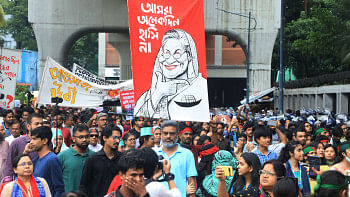Proposed two-tier system a test for Bangladesh

How Test cricket can be saved is a question that has been pondered upon for over a century, and since 2016, the ICC has seemingly made up its mind on the solution: dividing the teams into two tiers.
That year, the world cricket's governing body pushed to establish a two-tier system, with seven teams in the top flight and the remaining five in the bottom.
Reportedly, six teams had even agreed, however, the plans fell through due to opposition from others, most significantly India's.
Around nine years after that failure, the ICC is once again pushing for it, this time proposing to equally split the 12 teams into two groups of six.
Interestingly, this time the Board of Control for Cricket in India (BCCI) is seemingly leading the charge as the current ICC chairman Jay Shah and chief executive Sanjog Gupta both hail from India.
The proposal was discussed in the ICC's Annual General Meeting (AGM) in Singapore held from July 17-20, and even though some teams opposed it, especially Pakistan, an eight-member working group was formed to test its viability.
World cricket is seemingly split at the proposal, with some terming it a necessity to keep the format relative while others say it as a blatant cash-grab.
And amid all the debate, Bangladesh's future as a top-tier cricketing nation – at least on paper – hangs in a limbo.
For and against
Cricket Australia (CA) and England and Wales Cricket Board (ECB), the other two boards alongside the BCCI in cricket's supposed 'big three', support the move, their main incentive being that it would open the door for two bilateral series in every three years between these three sides.
The youngest Test sides in Ireland and Afghanistan also are reportedly for the tier system as it would open up more playing opportunities for them in red-ball cricket.
The position of teams like current World Test Champions South Africa, New Zealand, Sri Lanka is not clear but the former two could financially benefit from this move.
Meanwhile, teams like Bangladesh, Pakistan, West Indies, and Zimbabwe, all ranked below the top six in Tests, stand to lose the most from this change.
The invisible tiers
There is already an invisible tier in place in Tests, as the top sides hardly ever play the weaker teams.
Bangladesh, in its near 25-year-long history in Test cricket, have only played six Tests against Australia, and toured them only once for a Test series in 2003.
The Tigers have played just four Tests in England, the last time being in 2010, and have played only five Tests in India.
Zimbabwe have faced a similar neglect and the newest additions Afghanistan and Ireland are hardly getting any matches, having played just 11 and 10 Tests respectively since attaining Test status in 2017.
The argument used by the big three nations is that matches against weaker teams would not be as competitive. But by that logic, England have no business heading to Australia for the next Ashes, having not won a Test Down Under in their last 15 attempts.
Bangladesh's fate
Although there remains many challenges in implementing the two-tier system, if it does end up happening, Bangladesh, who are currently ranked ninth, are certain to start at the second tier, which would be detrimental to the Tigers' progress in the format.
But for now, the BCB is playing the waiting game.
"[In the ICC AGM] many did not agree to the decision to form a two-tier system… Till now, we just know about the committee being formed and perhaps in the next meeting an update will come," a BCB official told The Daily Star on condition of anonymity.

 For all latest news, follow The Daily Star's Google News channel.
For all latest news, follow The Daily Star's Google News channel. 








Comments